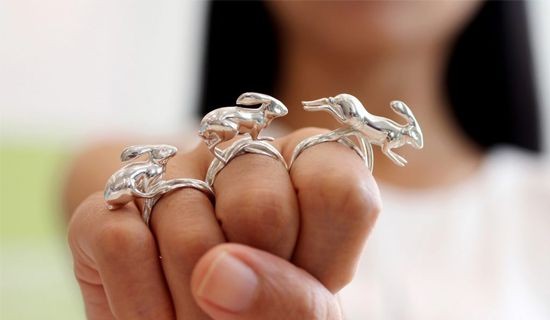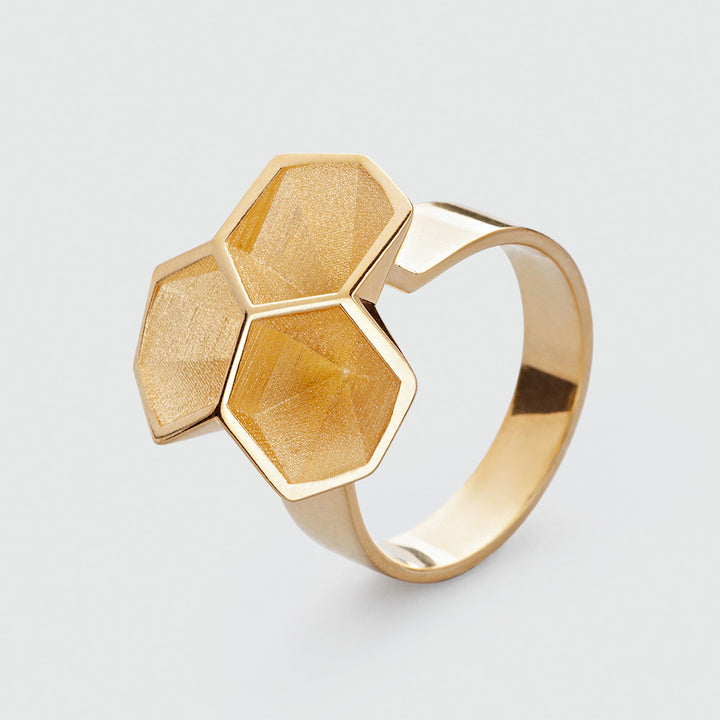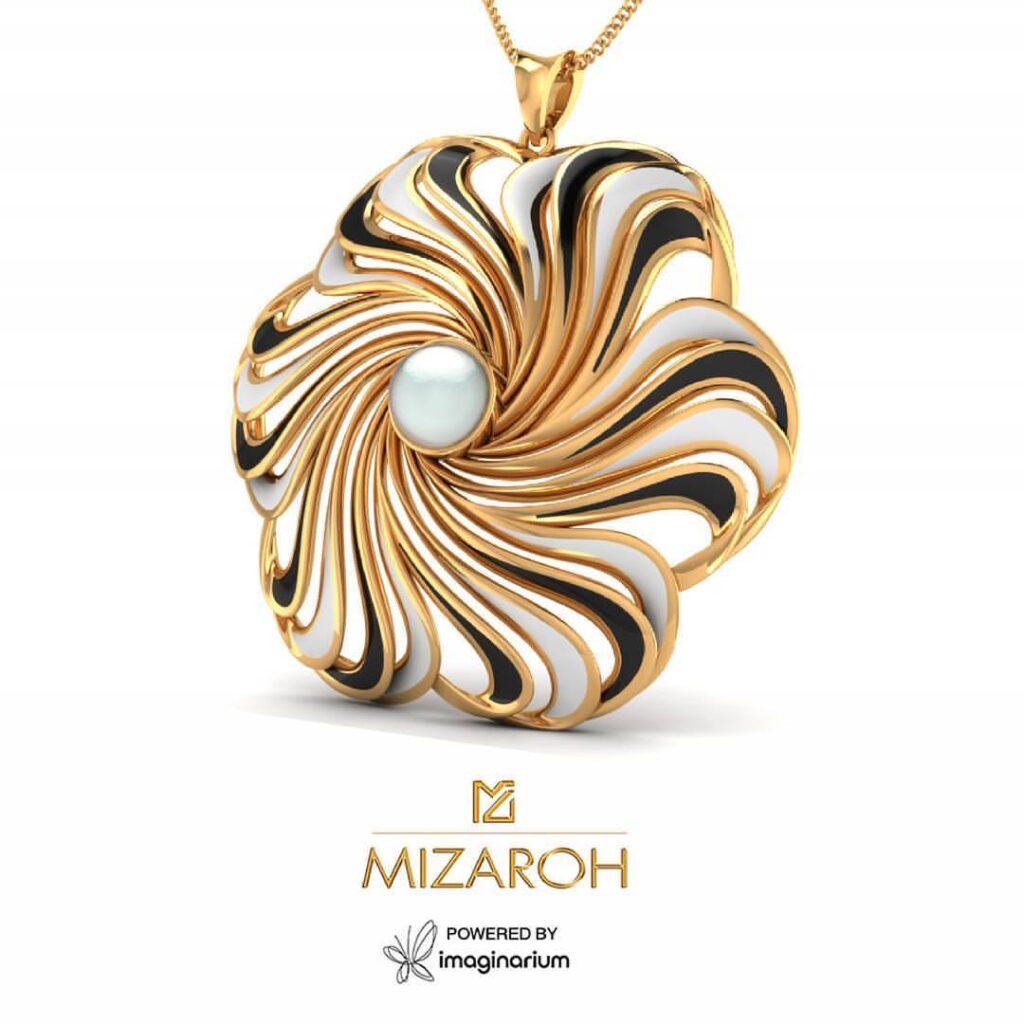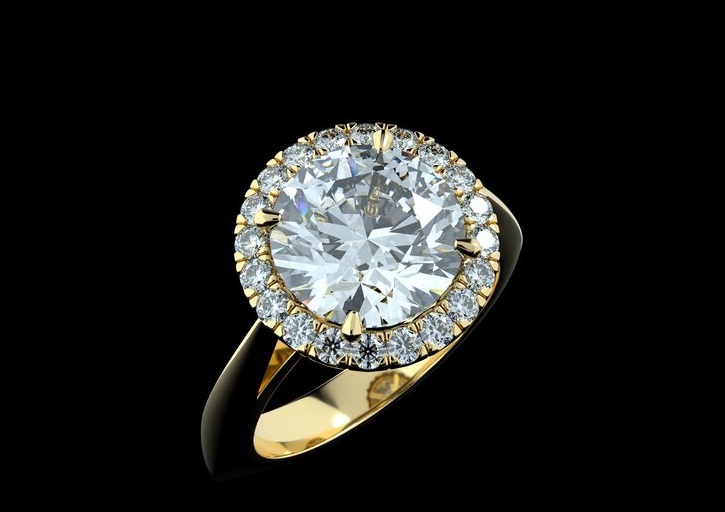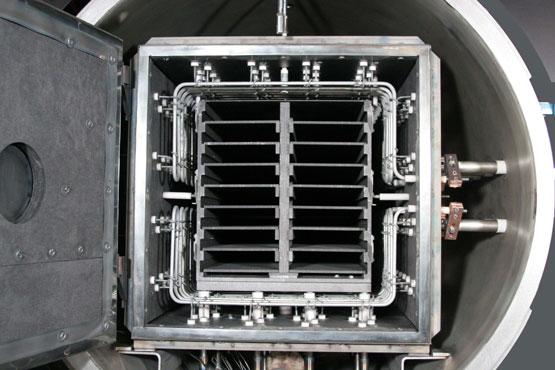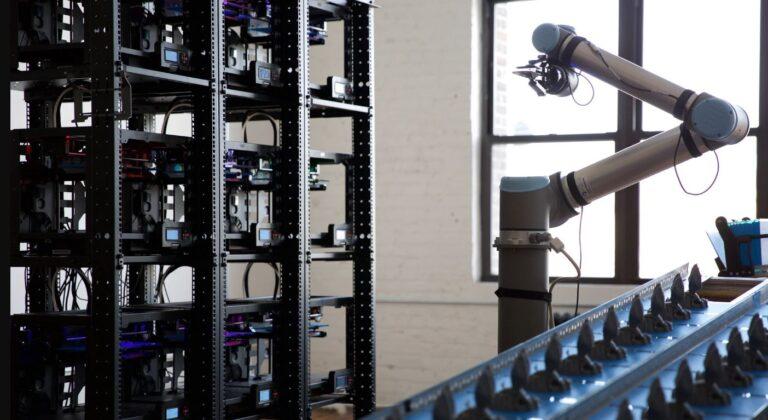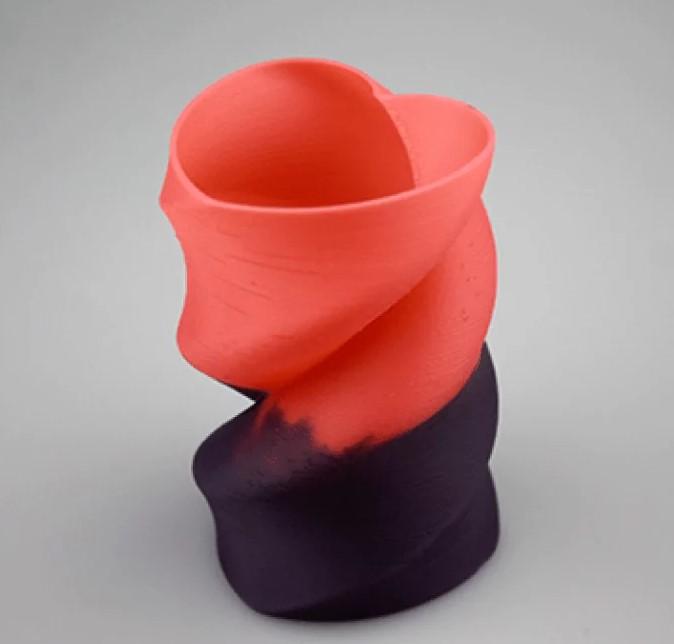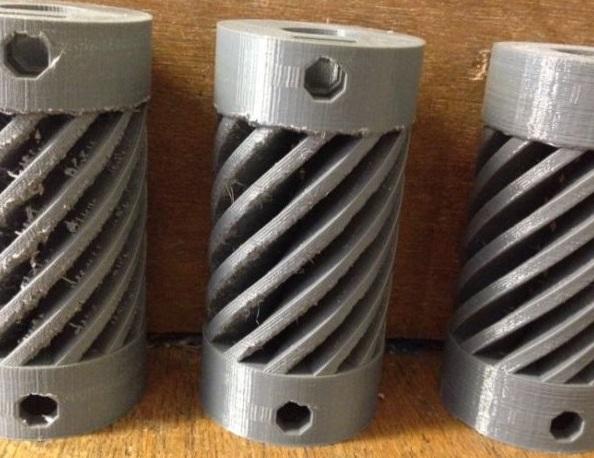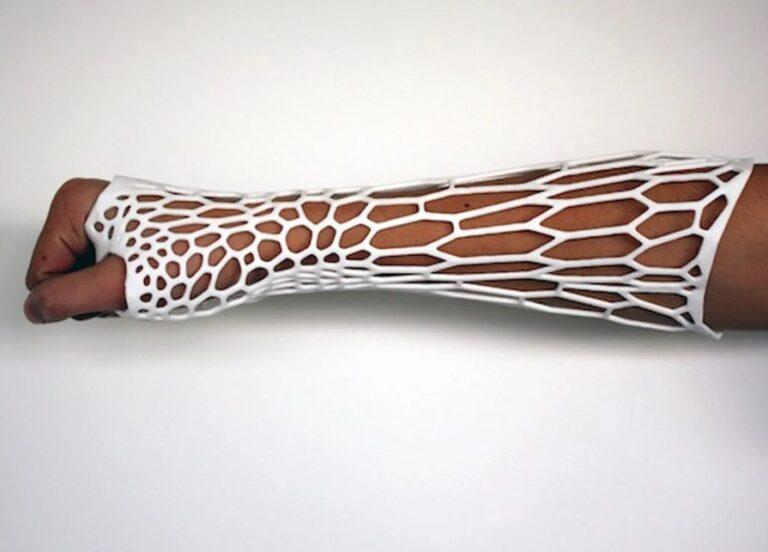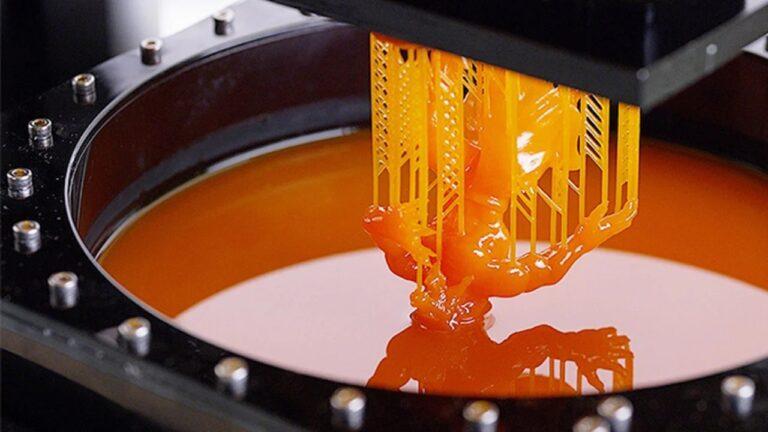3D Printed Jewelry For Beginners
The days of 3D printed jewelry sounding like something out of a science fiction film are gone. Today, an increasing number of jewelry designers are printing their creations. 3D-printed jewelry is on the cusp of becoming widespread, as it closely resembles traditional casted goods in appearance and feels. Let’s look at this design revolution in more detail.

Investment casting’s fundamental principles merge with the latest 3-D printing technology to create the jewelry of unique design. Jewelry designers carve the original design into a wax model and make a ceramic mold of it. They pour molten gold or silver into the mold to create an exact replica. Designers polish and finish the cast object to make it shine to attain its final look.
Digital Workflows augment Traditional Methods
Using the fundamentals of investment casting, you can produce astonishing pieces of jewelry. When jewelers hand-carve a pattern in wax, they lay it in a mold and either burn it out or melt it away. They pour precious metals like gold or silver into the mold cavity to make the cast item. Designers polish and finish the cast object to make it shine to attain its final look.
Jewelers use CAD software and a 3D printer to develop designs, patterns, and mold in a digital workflow. Investment casting, the traditional method of creating metal molds, entails burning off the original material’s pattern before pouring the wax. Because the design is simple, it can be easily adapted and replicated when needed.
What does 3D printing jewelry require?
Because 3D printing encompasses a wide range of technology, there is no one simple answer. Some printers utilize filament, while others use powder, and yet others use liquid resin or wax. Printing using liquid resin or wax (we’ll explain which is ideal for jewelry printing later) is another option.
All 3D printers, however, have one thing in common: they all require a 3D file. This 3D file contains information on the thing that the printer should print. You can create 3D models by using special software. These applications range from free modeling tools for beginners like Tinkercad to high-end programs designed for jewelry designers like RhinoGold.
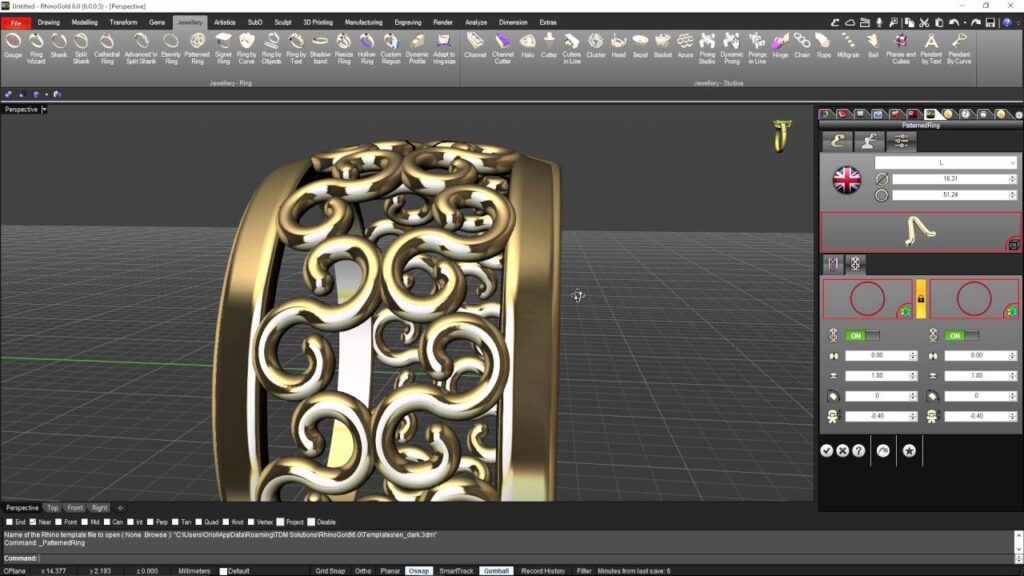

The printer can create a tangible representation of your 3D design by creating it layer by layer. The designer does not even need to possess a 3D printer when using online 3D printing services like i.materialise. We know precisely what the customer expects when we receive the 3D file via our website.
What are the newest 3D printing jewelry technologies?
We employ Lost-Wax Printing and Casting to make gold, silver, bronze, copper, and brass jewelry. This method incorporates both current 3D printing and traditional metal casting.
It all starts with a wax 3D print of your 3D model. The printing substance for the 3D printer is a wax-like resin. The sculpture then gets hollow wax tubes called sprues attached. A sprue is then attached to your model, and you connect the sprue to a ‘tree’ made out of wax. After that, the tree is placed in a flask and plastered over. When the plaster hardens, it produces the mold for the metal casting. The plaster cast is then baked for hours in an oven until the wax has completely burned off.
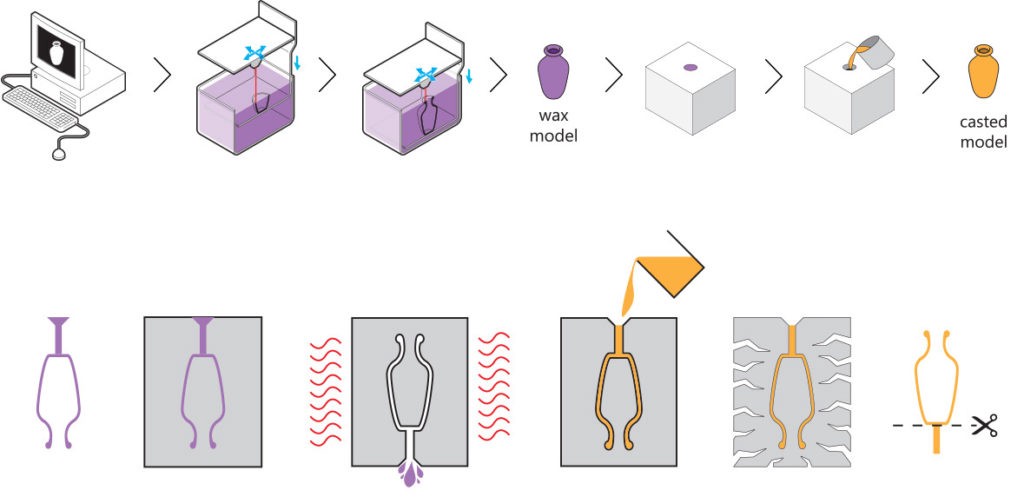

What are the advantages of using this technology?
The procedure, as mentioned earlier, combines 3D printing and traditional jewelry creation. So far, this has proven to be the most effective and cost-effective method of producing 3D-printed jewelry. It will create a genuine, substantial piece of jewelry with a smooth finish. You can also manually finish the job with post-processing if that’s your preference.
For jewelry designers, the main benefit is that they no longer have to worry about manufacturing. When the jewelry design is ready, you can use an online 3D printing service like i.materialise to make it a reality. We have all the information we need to get our 3D printers up and running with a 3D file. Printing jewelry without using an online 3D printing service is far more challenging, as it often requires industrial 3D printers that do not operate with standard home printers.
One of the best things about 3D printing is how easy it is to make changes after creating a digital design. To make sure that a 3D model is perfect, some people first print out plastic prototypes. It’s easy to make changes in the 3D modeling program and then print your design in metal of your choice.
What 3D printing materials and finishes do jewelers use?
Metals are the most frequent materials used by jewelry designers. Online 3D printing services like i.materialise, as you can see in the list below, provide not only a broad choice of metals but also a variety of finishing options that are very valuable for jewelry designers:
Brass: untreated, gold-plated, color-plated, natural PU coating, chrome-plated
silver: Gloss, high gloss, satin, sandblasted, and antique
gold: 14k or 18k, three color choices
Bronze: bare bronze with a PU cover.
For the time being, we’ll only look at three various Silver finishes because we don’t want to get into too much depth about each one. As you can see in the illustration below, the finish, you choose significantly influences the finished print. Antique silver (left) has a lovely black-and-white contrast, sandblasted silver (middle) has a matte finish, and high-gloss silver (right) has a very smooth and shining finish.


Other 3D printing materials used by jewelry designers include Polyamide (nylon plastic), Alumide (Polyamide mixed with aluminum powder), and Rubber-like materials (flexible plastic).
New Horizons in Customized Jewelry: Benefits for Jewelers and Customers
Customized jewelry was once a costly luxury due to the intricacy of the design and production process. On the other hand, Jewelers have already begun to provide bespoke creations as part of their standard service or as a value add using digital tools. If you go to a jeweler today and ask for an engagement ring, you may be able to create a one-of-a-kind design.
The jeweler and the customer can debate the design together, and the customer can handle and try on a physical replica of the ring an hour later. On-site digital design paired with the speed of 3D printing has dramatically reduced the feedback loop between designer and client in the jewelry retail industry.
Because hand carving a valuable one-of-a-kind item is no longer required, moving from design to production is quicker and faster. Studying the customer’s wishes and adjusting the try-on pieces enables designers to reduce costs by 3D printing and casting directly in wax, making personalized jewelry more affordable.
Design Freedom
Jewelry designers may now create designs that would be impossible to carve by hand conventionally, thanks to 3D printing. New castable resins have made it possible for low-cost desktop 3D printers to create higher-quality prototypes.
Castable Wax 40 Resin combines the smooth surface finish of stereolithography (SLA) 3D printing technology with precise print parameters to achieve jewelry-quality prints in a variety of materials. A laser can help you make precise and accurate recordings of design details on jewelry. this Extraordinary design details are delicate filigrees, raised writing, and exquisite pavé stone settings
With these long-standing design constraints lifted, we see new design genres emerge from jewelers with digital skills in the United States and South Asia, Asia Pacific, and the Middle East.
Easier Mass Manufacturing
Not only are digital tools making it easier to personalize jewelry, but they’re also making it easier to mass-produce designs.
We can use Vulcanized rubber molds to mass-produce wax patterns for lost-wax casting. You “pour” wax into the mold to make the master pattern, but you can also carve a new design from an investment cast.
We can use 3D printers to create master models, RTV molds, and even long-lasting high-temperature vulcanized rubber molds.
You can use 3D-printed jewelry designs to create Room temperature vulcanization (RTV) and high-temperature natural rubber vulcanization molds.
“You can leap right from the 3D printed part to a master mold with the quality that you can obtain with SLA 3D printing for manufacturing these jewelry pieces,” said Amos Dudley, Jewelry Vertical Product Manager at Formlabs. “The surface finish is already quite smooth, so there isn’t much finishing required.” You can make rubber molds to create the final wax parts used in jewelry production.”
competitive independent jewelers
New technology can be difficult to access when it’s first released to the public, as most people lack the money or technical skills needed to use it. Previous generations of jewelry 3D printers required a lot of maintenance and a professional operator, in addition to thousands of dollars in investment; therefore, they were only available to the most extensive jewelry companies and casting houses. “3D printing has become much more inexpensive, presenting new options to independent jewelry manufacturers,” Dudley says.
The digital workflow has become a feasible way of production due to the reduced cost and higher-quality jewelry 3D printing technology. “We’ll see an increasing trend in that area in the future years, with smaller jewelers embracing these technologies and becoming less centralized,” Dudley said.
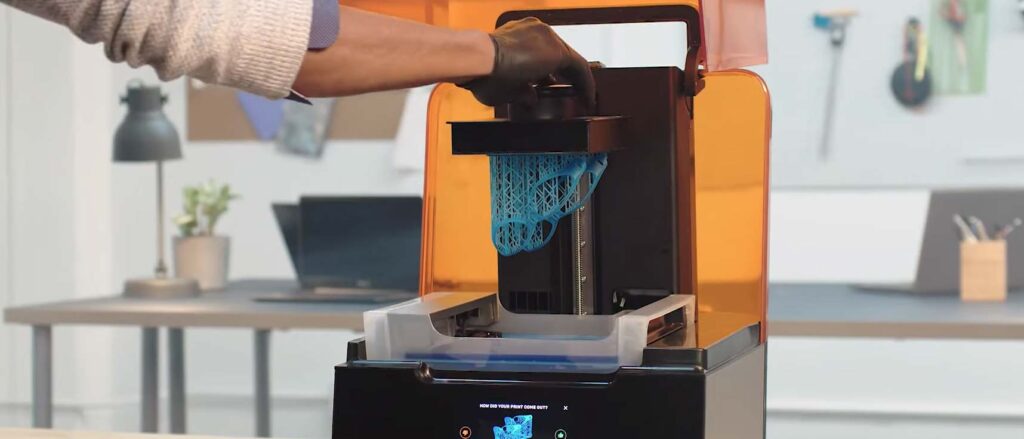

As the industry grows more experienced with castable resin 3D printing, this trend to increasingly competitive independent jewelers will continue. Historically, wax 3D printers have dominated jewelry 3D printing due to their complexity and high cost. With low-cost desktop jewelry 3D printers like the Formlabs Form 3 DLP printer, the technology is becoming more accessible to jewelers, particularly tiny independents.
The Future of the Jewelry Industry
Despite its promise, 3D-printed jewelry still represents a small percentage of the market due to the previously high cost of large-scale 3D printing and the perceived barrier to entry of digital jewelry creation. Nonetheless, the 3D-printed jewelry industry will rise as 3D printing technologies become more user-friendly and accessible.
New, simple-to-use materials, such as Castable Wax 40 Resin, are lowering the learning curve, resulting in broader acceptance of the workflow and market expansion. Desktop stereolithography 3D printers play a crucial role in this expansion.
“SLA resins have a reputation for being less expensive than wax, but they’re also less useful. “At Formlabs, we’re trying to change that perception with solutions that are more failsafe and reduce some of the excess efforts that still exist in the jeweler’s process,” Dudley said.
Jewelry 3D printing has become more accessible to both individual designers and huge casting companies thanks to high-resolution desktop 3D printers like the Formlabs Form 3. It’s not only a technology issue for 3D-printed jewelry. In contrast to conventional approaches, the newest cohorts of jewelry designers entering the profession have begun their schooling with digital technologies, including training on 3D printers.
“They’ll be seeking for a printer that truly matches their requirements,” Dudley added. “I believe that when they take over from the present embedded user base, we’ll see increasing adoption.” The future of 3D printing in jewelry is bright. With the growing popularity of design software and the increasing use of 3D printing by jewelry makers, exciting changes are on the horizon.
Main players
Jweel
Jweel is an online service that allows you to design and personalize professional-quality jewelry right in your browser. There is no need to download anything; all you need is an internet connection and your imagination! Select a tool, design a fantastic piece of jewelry, view it in 3D, and download a printable file!


You can make use of Jweel tools to create standard 3D printable files. You may have your piece of jewelry made in the material of your choosing and sent directly to your home thanks to 3D printing online services like i.materialise! 3D printing technology currently allows for the rapid production of high-quality bespoke objects. Jweel was a Skimlab brand founded in 2013 when the three co-founders met.
i.materialise
I.materialise is part of the Materialise group (Nasdaq: MTLS), a valued partner for numerous businesses since its inception in 1990. Since then, Materialise has applied its knowledge to various software, engineering, and 3D printing services, which comprise the industry’s backbone.
Materialise’s open and flexible platforms allow companies in healthcare, automotive, aerospace, art & design, and consumer products to create breakthrough 3D printing solutions that improve the world.
With headquarters in Belgium and offices throughout the world, the firm has gathered the industry’s most extensive collection of software developers and one of the world’s most extensive 3D printing facilities.
Materialise’s objective is to use its software and hardware infrastructure and in-depth expertise of additive printing to improve product creation, resulting in a better and healthier society.
RADIAN
RADIAN is a Berlin-based label that combines diverse design parts to create modern 3D printed jewelry and sustainable home items. The brand’s designers chose to work with geometric and abstract shapes, influenced by architecture and employing a visual approach. All of the collections have a solid basis. Instead of writing about concepts, we put them into visually-appealing form. 3D printing as a production method gives us a whole new universe of possibilities in terms of shapes and aesthetics. It enables RADIAN to work with cutting-edge materials and produce one-of-a-kind, creative statement pieces.
The roots of RADIAN may be traced back to 2012 when we began developing the award-winning Solitaire jewelry collection. Our significant interest in 3D printing and the digital design process resulted in a rising number of groups, which drew the attention of the London Science Museum, the Leopold Museum’s shop in Vienna, and the Musée des Arts Décoratifs in Paris. You can find RADIAN pieces in boutique shops, concept stores, and museum shops worldwide!
LACE
If you go into any jewelry store, you’ll undoubtedly find the same cases packed with practically identical generic designs. There is minimal room for innovation at every step in the existing production process.
We can make very elaborate and accurate designs accessible and inexpensive by infusing technology into every part of our company. We’re reshaping the jewelry business from the ground up while preserving the most significant standards of quality and ethics.
Jenny has always worked as an architect at the crossroads of art and architecture. Jenny was in Miami for Art Basel in 2013, and she had three stunning, sculptural necklaces in her baggage that she 3D printed herself to wear. She got a lot of positive responses just going around Miami’s streets. Many individuals approached her, eager to touch the necklace or possibly purchase it from her.
Jenny spent a year of R&D after returning from Miami, focusing on how to use 3D printing to create high-end items. She founded LACE in the fall of 2014.
We integrate our architectural design into high fashion jewelry using the latest digital modeling and 3D printing technologies. We can add complexities and intricacy to our products using 3D printing without the customary mark-up associated with traditional manufacturing.
Mizaroh
A jewelry firm motivated by innovation and is influenced by its tradition and culture while incorporating modern aesthetics.
Zohara Moorthy has a Bachelor’s degree in Product Design from the National Institute of Design in Ahmedabad and a Master’s degree in Fashion Accessories from the Istituto Marangoni in Milan. She also attended the Gemmological Institute of India in Mumbai, studying gemmology and diamond grading and identification. Zohara has always taken a unique approach to design. Her work reflects ground-breaking developments in the high-end areas she has targeted. She apprenticed under Viren Bhagat, a world-renowned jeweler. She worked on projects for Hugo Boss, Ermenegildo Zegna, and Frankie Morello in Italy and Imaginarium, Swarovski, Rosentiques, the World Gold Council, and Varuna D Jani, Raghavender Rathore, and Surana in India. In 2015, the GJEPC and Vogue presented her with the Artisan Jewellers Award in the Avant-Garde Category for her creation. Mizaroh is her first foray into designing her collection of high-end fashion jewelry.
Designer Zohara Moorthy has long been fascinated by 3D printing and its possibilities in the realm of jewelry. So when she launched Mizaroh, it was to celebrate the notion of 3D printed jewelry and spread awareness of it to the general public. Mizaroh’s designs are heavily influenced by Indian architectural elements, with contemporary forms and angles added. Every item is made of brass and is gold plated with 22k gold before being enameled. The patterns were created with metropolitan women of all ages in mind and are adaptable enough to be worn at any time of day, whether at home, at work, or for a special occasion.
Precious Upload & Print
India’s most significant Rapid Prototyping and Rapid Manufacturing Center is Imaginarium. We make prototypes for a wide range of sectors, including jewelry, engineering, automotive, architecture, consumer products, and so forth.
We provide customers with complete solutions by offering a varied selection of cutting-edge equipment. You can trust Imaginarium to suit your demands since we have over a decade of Rapid Prototyping experience.
GUY & MAX
GUY&MAX are two brothers specializing in Bespoke Fine Jewellery for the most discriminating collectors of art and design. GUY&MAX will take you on an excursion from “Tiaras to Tootsies” to decorate you or your loved one in the fascinating way possible. We urge our customers to use the unlimited range of patterns, metals, gemstones, and methods available to express themselves uniquely. Our clients may build diamonds to their very own pinpoint precision thanks to Max’s revolutionary creative process and our combination of pioneering and conventional production processes.
Max’s creations are all virtual. Max turns all of your subtleties to near-photographic perfection for your viewing pleasure once Guy has documented all of your nuances. Our service ensures your satisfaction.
We send digital data to our bullion suppliers, who use that information to make a model or solid scape before 3D printing or to cast the components to microscopic precision. This method produces relatively little waste. All the gold came from recycled sources.
GUY&MAX also hand makes components at their workshop on rare but necessary occasions.
Our freelance artisans polish and prep the metal in this traditional studio beforehand, setting the jewels, which may be heirlooms or responsibly selected by Guy. The one-of-a-kind diamonds are then hand-finished, polished, and, if required, plated. The London Assay Office stamps all our items with our unique “GB” stamp.
GUY&MAX jewelry comes in stylish navy blue gift boxes.
Talk to Guy about day-to-day care to keep the product great after being opened. Every couple of years, everything of our jewelry is given a free clean and reappraisal for insurance purposes.
Refrence
- i.materialise.com
- formlabs.com
- jweel.com

